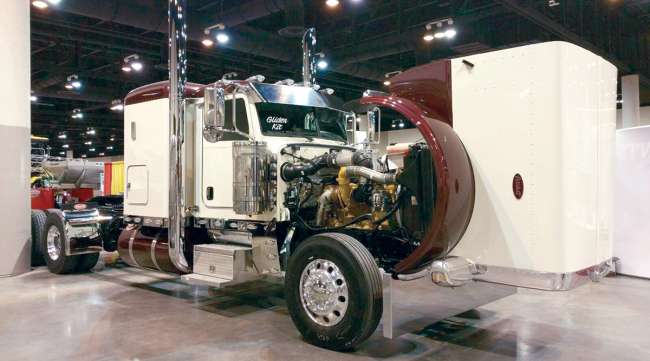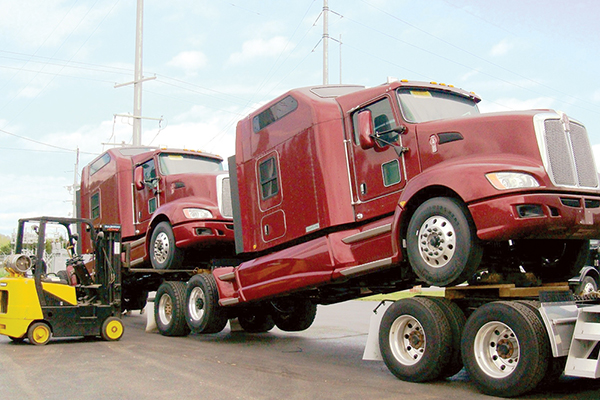Senior Reporter
White House Nonresponsive to EPA Inspector General Requests on Glider Truck Audit

The U.S. Environmental Protection Agency Inspector General has complained that a delay by the White House in responding to information requests is undermining an audit of the Trump administration’s attempt to repeal an Obama-era rule limiting production of heavy-polluting glider trucks.
“Such protracted delay constitutes a clear impediment to our audit,” EPA Acting Inspector General Charles Sheehan wrote in a memo April 25 to Office of Management and Budget Director Mick Mulvaney. “It undermines our ability to fully answer the congressional request that led to our audit.”
The delay prompted a pair of Democratic Senate leaders to accuse OMB of a “consistent pattern over several months to both ignore and sidestep basic requests” from the Inspector General’s Office.

Carper
“We are deeply troubled to learn that, for several months, top leadership at the Office of Management and Budget has been evading the EPA Office of Inspector General’s entirely reasonable investigatory requests,” said U.S. Sens. Tom Carper of Delaware and Tom Udall of New Mexico. “Director Mulvaney’s refusal to cooperate with the EPA OIG investigation we requested it undertake only leads to more questions about this administration’s blatant disregard for transparency and the rule of law.”

Udall
The glider audit, first announced in September, began as a request by Republican members of Congress to review an EPA staff study that concluded glider trucks can emit up to 450 times more diesel particulate matter and up to 40 times more nitrogen oxides than new trucks.
However, in December, the Inspector General announced plans to broaden the audit to include a look at the “decisions and directives” that led to a November 2017 proposed rule to repeal the glider truck provision in the Phase 2 greenhouse gas emissions final rule for heavy trucks that was issued in June 2016.
The greenhouse gas heavy truck rule called for lowering truck emissions of carbon dioxide and other greenhouse gases in 2021, 2024 and 2027, but left in place the earlier limit on emissions of nitrogen oxide at 0.2 gram standard.
The Phase 2 rule limits glider truck manufacturers to building a maximum of 300 gliders annually.
EPA Inspector General spokesman Jeffrey Lagda declined comment on the ongoing audit, and OMB did not respond to a request for comment on the Inspector General memo.
Glider trucks combine new truck bodies with older and oftentimes rebuilt engines. They have long been the target of criticism by environmental groups, truck manufacturers and segments of the trucking industry, including American Trucking Associations, since the kits’ older engines do not meet current federal emissions standards.

EPA Administrator Andrew Wheeler wrote in January that the most appropriate means for analyzing costs and benefits of glider trucks would be to compare the trucks’ remanufactured engines to used trucks. (Hoover's Truck & Equipment)
The Inspector General’s memo April 25 specifically expressed concern over the OMB’s failure to answer auditors questions about the proposed rule’s “significant determination,” but did not include a Regulatory Impact Analysis backing up the proposal to repeal the Phase 2 glider provision.
“Our understanding is that by not including a Regulatory Impact Analysis during the Notice of Proposed Rulemaking stage, the public misses an opportunity to review and comment on this information allowing the agency to potentially avoid negative comments on the analysis,” the Inspector General wrote. “Is there an advantage in waiting until the draft final rule state to do the Regulatory Impact Analysis?”
When a rule is deemed significant, the Regulatory Impact Analysis critically assesses the positive and negative effects of proposed and existing regulations.
Despite attempts by former EPA Administrator Scott Pruitt to repeal the glider provision, current agency chief Andrew Wheeler has kept the rule in place at least through 2019, but the repeal proposal remains on EPA’s list of regulatory issues under consideration.
Emission standards are based on public health, not based upon what the glider industry wants.
Glen Kedzie, energy and environmental affairs counsel for ATA
In January, Wheeler said in a letter to Congress that EPA plans to tailor its new glider truck emissions standard to help protect the glider industry from “going out of business or substantially reducing its economic growth potential.”
In a written response to questions submitted by senators after his public confirmation hearing Jan. 16, Wheeler said that the most appropriate means for analyzing costs and benefits of glider trucks would be to compare the trucks’ remanufactured engines to used trucks, since gliders “tend to be bought in lieu of used, and not new, trucks.”
But Glen Kedzie, energy and environmental affairs counsel for ATA, said that EPA cannot set a separate emissions standard just for glider trucks.
“Emission standards are based on public health, not based upon what the glider industry wants,” Kedzie said.





